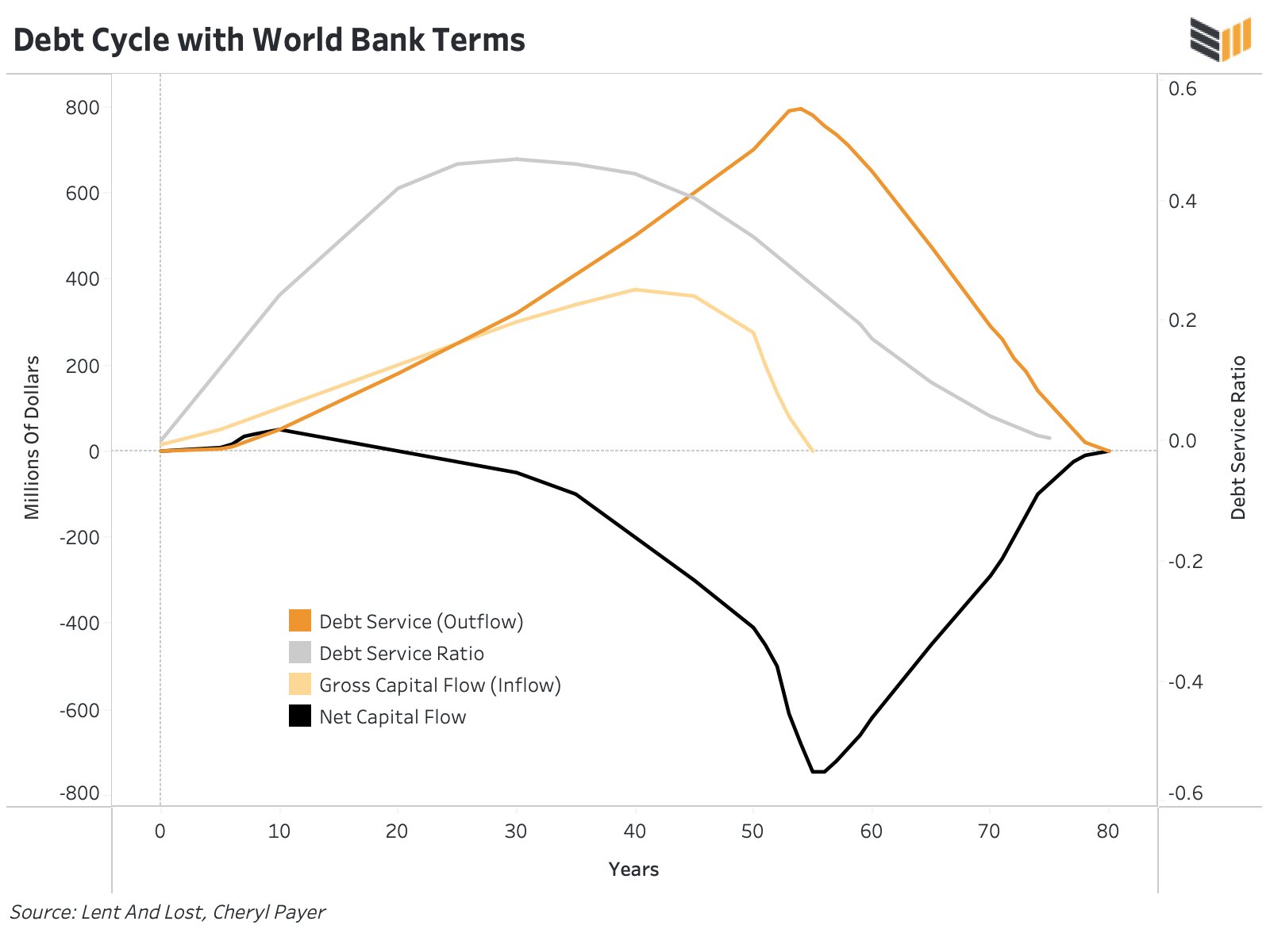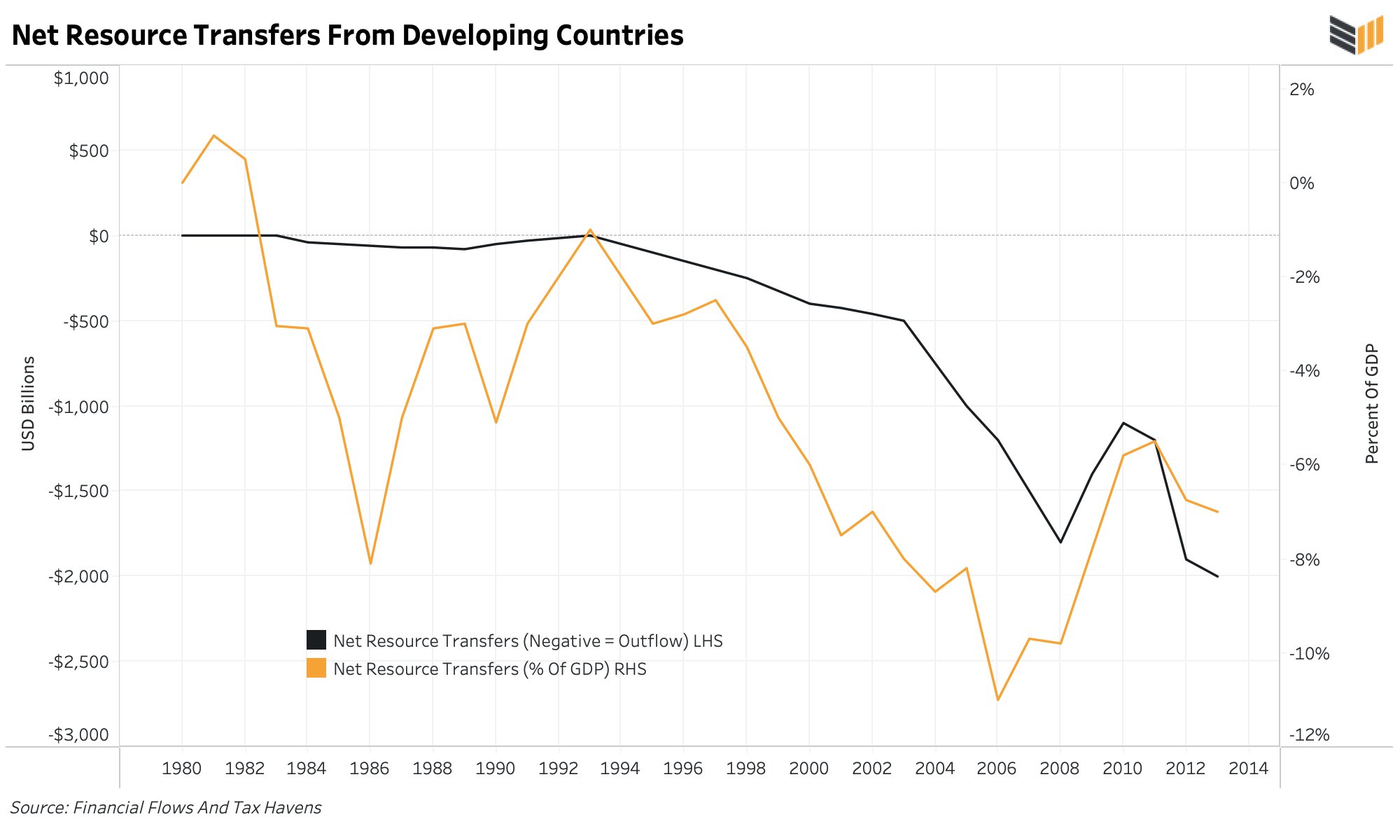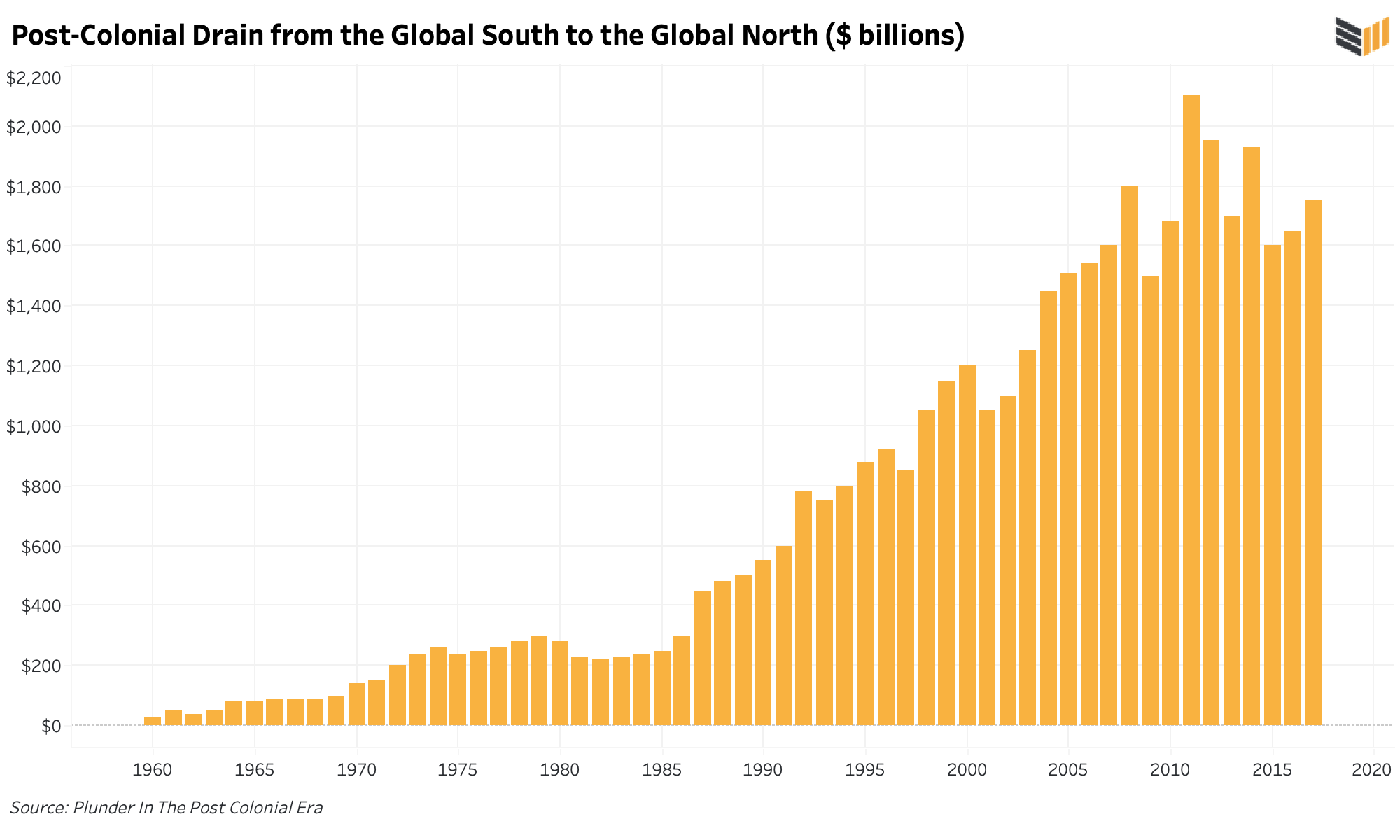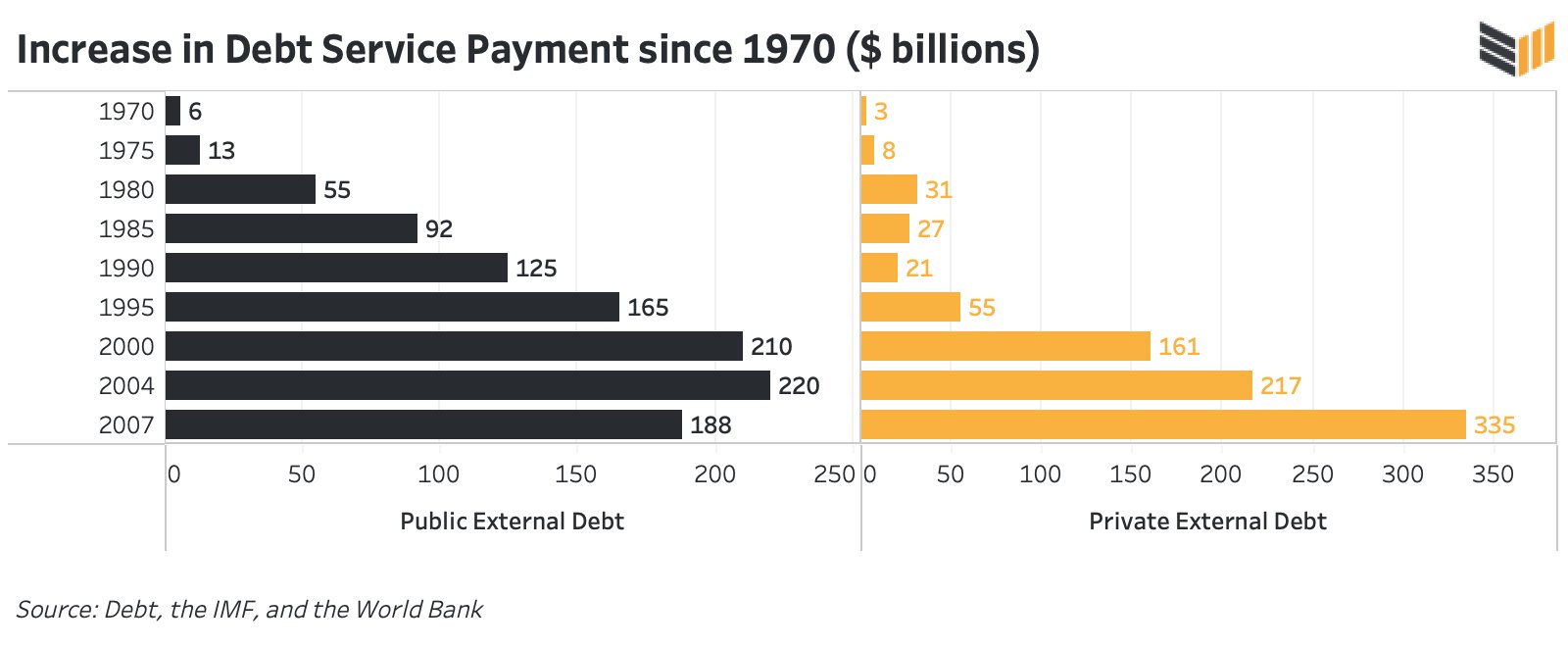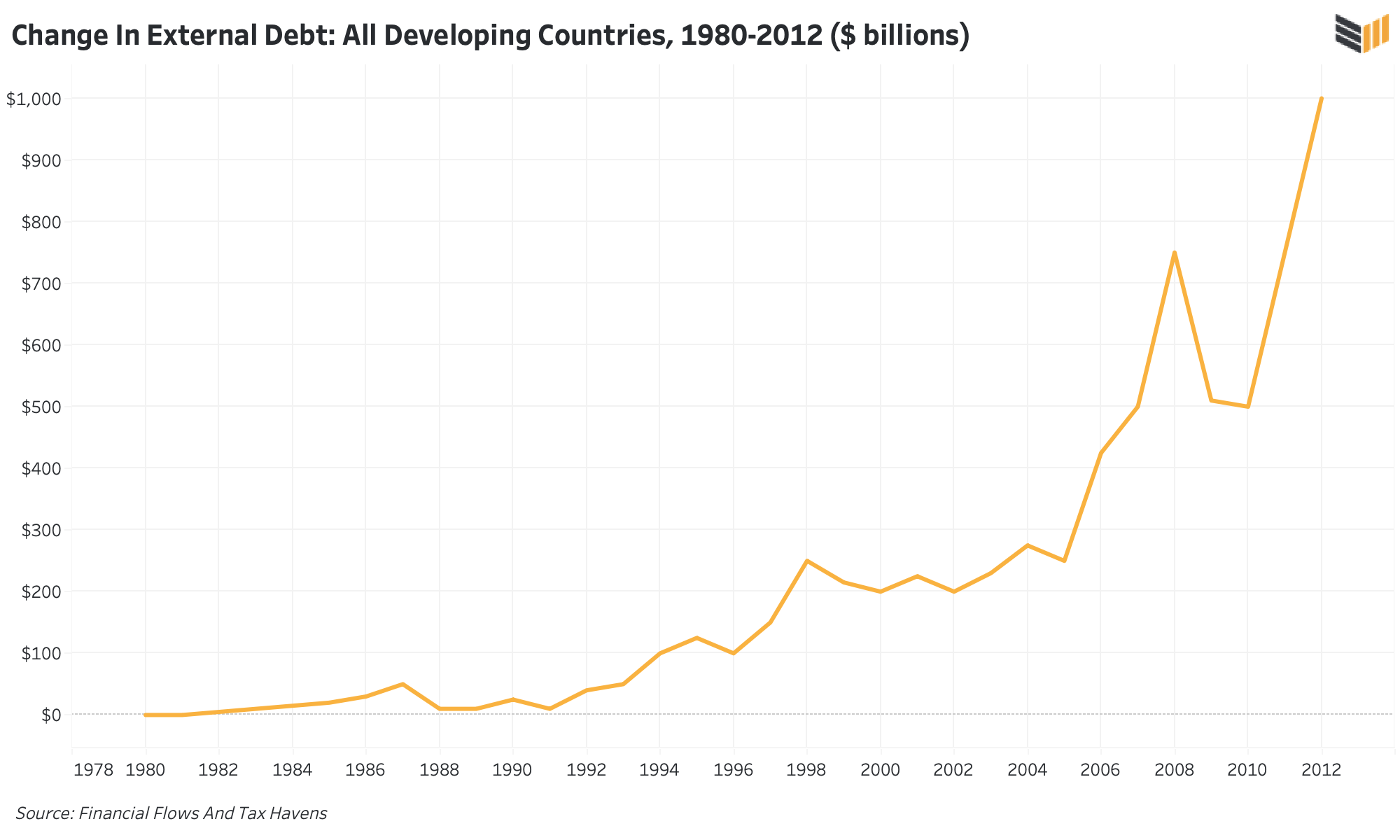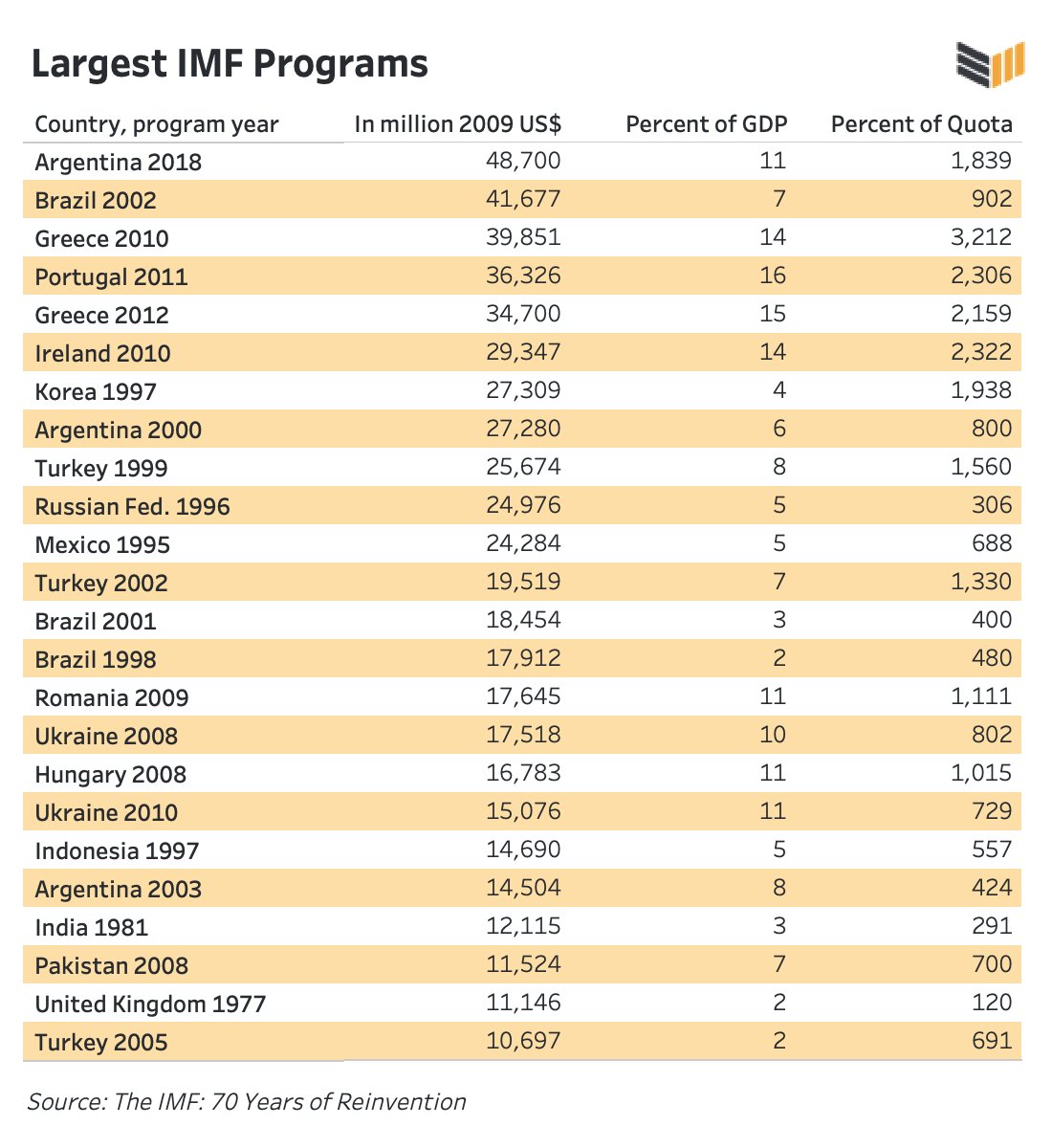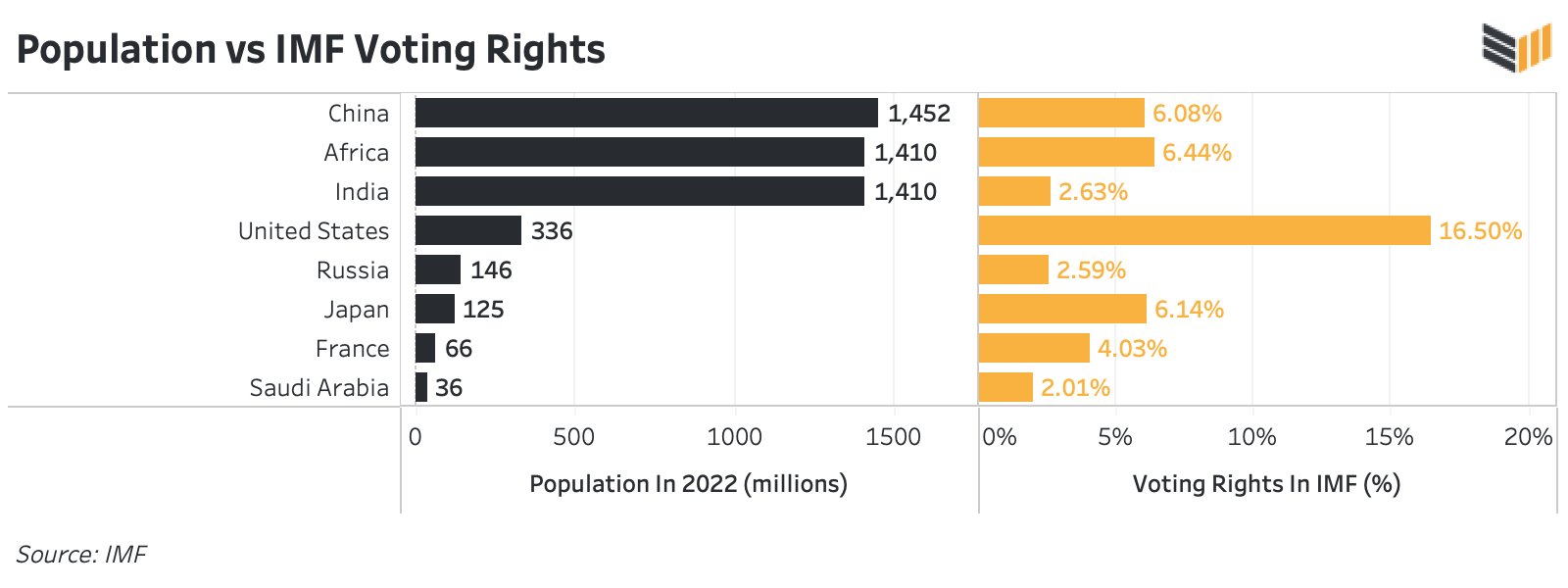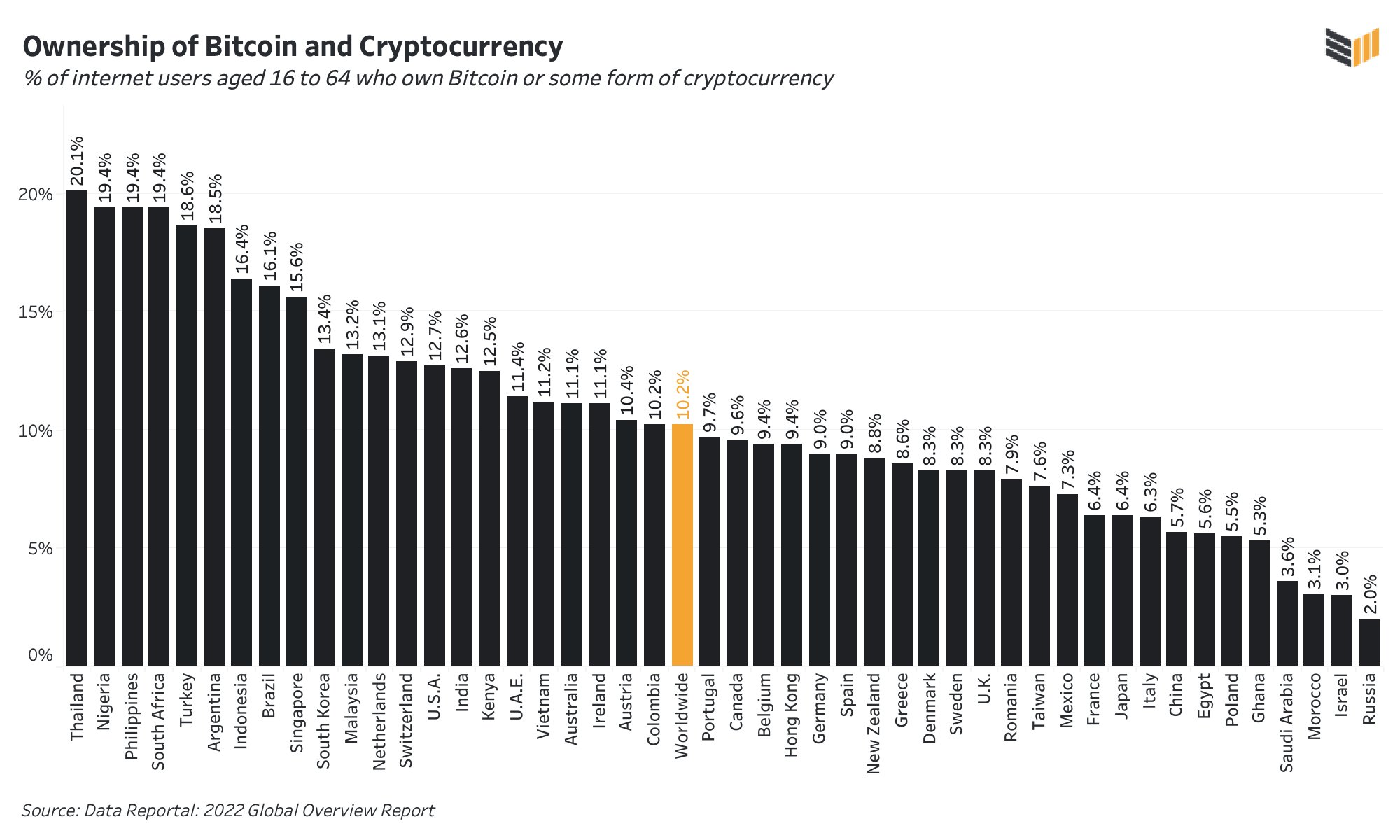Thread
1/ My essay "Structural Adjustment: How the IMF and World Bank Repress Poor Countries and Funnel Their Resources to Rich Ones" is now live
The Bank and Fund claim to help poor countries develop and rescue them from crises
But what if that's not true?
bitcoinmagazine.com/culture/imf-world-bank-repress-poor-countries
The Bank and Fund claim to help poor countries develop and rescue them from crises
But what if that's not true?
bitcoinmagazine.com/culture/imf-world-bank-repress-poor-countries
2/ As any credit card holder knows, when you borrow, you eventually need to pay back a higher sum: principal plus interest
This basic concept is forgotten when we think about development economics
But billions of dollars of loans over decades creates even more debt
This basic concept is forgotten when we think about development economics
But billions of dollars of loans over decades creates even more debt
3/ In the 1960s and 1970s, this is exactly what happened
Huge credit was extended to the Third World
Eventually the amount repaid by borrowers exceeded what was given
This moment happened in 1982
Since then, the net flow of resources has been from poor countries to rich ones
Huge credit was extended to the Third World
Eventually the amount repaid by borrowers exceeded what was given
This moment happened in 1982
Since then, the net flow of resources has been from poor countries to rich ones
4/ In this way the IMF and World Bank have approximated the dynamics of "colonial drain"
Where imperial powers looted the periphery of the globe for hundreds of years, obtaining cheap resources and labor and selling finished goods back to markets where they had monopolies
Where imperial powers looted the periphery of the globe for hundreds of years, obtaining cheap resources and labor and selling finished goods back to markets where they had monopolies
5/ Today the difference is that the sword and gun have been replaced by weaponized debt
What was once accomplished by physical force is now accomplished by "structural adjustment":
Conditions attached to loans that dictate how borrowers can run their economies
What was once accomplished by physical force is now accomplished by "structural adjustment":
Conditions attached to loans that dictate how borrowers can run their economies
6/ The IMF — and, later, the World Bank — attached conditions to their loans that forced Third World countries to do what industrial countries like the US, UK, Japan, and Germany were never asked to do post-WWII:
Full austerity measures
Full austerity measures
7/ The structural adjustment playbook imposed on developing countries included:
-Raising taxes
-Currency devaluation
-Shrinking bank credit
-Wage ceilings
-Scrapping food + energy subsidies
-Cutting state healthcare and education
-Favorable rules for multinational corporations
-Raising taxes
-Currency devaluation
-Shrinking bank credit
-Wage ceilings
-Scrapping food + energy subsidies
-Cutting state healthcare and education
-Favorable rules for multinational corporations
8/ The goal of structural adjustment — and, in general, of the Bank and the Fund — was to view Third World countries as companies
Expenses had to be reduced, profits had to be increased
This meant domestic consumption was to be sacrificed so that exports could be maximized
Expenses had to be reduced, profits had to be increased
This meant domestic consumption was to be sacrificed so that exports could be maximized
9/ World Bank policy in particular was designed to transform the traditional consumption agriculture of Third World countries into monocrop industry to mass export (typically non-edible) goods
For example, coffee, tea, rubber, palm oil, cocoa, and cotton
For example, coffee, tea, rubber, palm oil, cocoa, and cotton
10/ World Bank policy was also designed to facilitate the extraction of minerals and other natural resources to international markets, with as little as possible being soaked up by local populations
Think: a remote hydro dam powering a mine, putting minerals on a train to a port
Think: a remote hydro dam powering a mine, putting minerals on a train to a port
11/ Export earnings did not typically benefit locals, but rather helped service foreign debt, purchase weapons, import luxury goods, fill Swiss bank accounts, and put down dissent
Historically, most Bank and Fund clients were unaccountable autocrats
Historically, most Bank and Fund clients were unaccountable autocrats
12/ The affinity of the IMF and World Bank with dictators runs deep and to their very founding
In the 1940s and 1950s, the Bank and Fund extended credit to a variety of colonial operations, including to the Dutch, British, French, and Australians
In the 1940s and 1950s, the Bank and Fund extended credit to a variety of colonial operations, including to the Dutch, British, French, and Australians
13/ World Bank support for Portuguese domination of Mozambique and South African Apartheid was so scandalous that the UN tried to force them to cancel their loans
But the Bank claimed that as a neutral organization it could not get involved with politics, so the loans were made
But the Bank claimed that as a neutral organization it could not get involved with politics, so the loans were made
14/ The World Bank and IMF rarely met a dictator they didn't like
Imperialists and right-wing regimes like the British, Pinochet, and Suharto were supported alongside left-wing or Marxist regimes like Mengistu, Tito, the CCP, and Nyerere
Imperialists and right-wing regimes like the British, Pinochet, and Suharto were supported alongside left-wing or Marxist regimes like Mengistu, Tito, the CCP, and Nyerere
15/ Suharto, Marcos, and Mobutu top the list in terms of theft and repression
Each one borrowed billions from the Bank and the Fund, only to siphon off much of it for their own personal uses
At the same time they impoverished their populations
Each one borrowed billions from the Bank and the Fund, only to siphon off much of it for their own personal uses
At the same time they impoverished their populations
16/ One would think that their debt would be considered illegitimate, as the populations of their countries did not not consent to the loans
This concept is known as "odious debt" and originated more than 100 years ago
But the Bank and Fund have never followed this precedent
This concept is known as "odious debt" and originated more than 100 years ago
But the Bank and Fund have never followed this precedent
17/ Third World countries were never allowed to go bankrupt
Instead, broke autocrats would get new loans from the Bank and Fund
By the 1970s the leaders of these sister institutions knew that Third World debt could only be repaid with more debt
It was a literal ponzi scheme
Instead, broke autocrats would get new loans from the Bank and Fund
By the 1970s the leaders of these sister institutions knew that Third World debt could only be repaid with more debt
It was a literal ponzi scheme
18/ A key point is that the Bank and Fund's creditors did not want holes on their balance sheets
They did not want countries to go bankrupt
They would prefer to extend more loans, so they could get repaid
They did not want countries to go bankrupt
They would prefer to extend more loans, so they could get repaid
19/ Again, most Bank and Fund clients were unaccountable and hugely corrupt dictators, who were happy to borrow today at the expense of the future
So the lender and borrower had every incentive to keep the system going
So the lender and borrower had every incentive to keep the system going
20/ The poor and middle classes populations of the Third World, who were impoverished and repressed by structural adjustment and its enforcers, did not have a say
There was zero democratic accountability
There was zero democratic accountability
21/ The outcome of 60 years of IMF and World Bank lending policies is staggering
Between 1960 and 2017, a staggering $62 trillion was drained from poor countries to rich ones
This is the equivalent of 620 Marshall Plans
Between 1960 and 2017, a staggering $62 trillion was drained from poor countries to rich ones
This is the equivalent of 620 Marshall Plans
22/ Against what we are led to believe, people in poor countries subsidize the way of life of people in rich countries
Not the other way around
Poor countries have paid more than $7 trillion in debt service since 1980 to their creditors
Not the other way around
Poor countries have paid more than $7 trillion in debt service since 1980 to their creditors
23/ Developing country debt has increased exponentially from the 1970s to today
Former colonies now owe their former colonizers 189 times more than they did in the 1970s
Former colonies now owe their former colonizers 189 times more than they did in the 1970s
24/ The Bank and Fund have helped these countries achieve the impossible: borrow so much debt that they could never possibly pay it back
The solution is always to borrow more
The largest IMF loan in history was $57 billion, to Argentina, just 4 years ago
The solution is always to borrow more
The largest IMF loan in history was $57 billion, to Argentina, just 4 years ago
25/ Zooming out, the Bank and the Fund have not "developed" poor countries and have not "saved" them from bankruptcy
They have made poor countries dependent on rich ones for food and technology, reduced their sovereignty, and bailed them out beyond the point of financial reality
They have made poor countries dependent on rich ones for food and technology, reduced their sovereignty, and bailed them out beyond the point of financial reality
26/ Worst of all: during the 70s and 80s, the per capita income of dozens of poor countries shrunk despite their growing populations
For every 2% decline in GDP, the mortality rate increases by around 1%
This means tens of millions as a result of Bank and Fund policy
For every 2% decline in GDP, the mortality rate increases by around 1%
This means tens of millions as a result of Bank and Fund policy
27/ The Bank and Fund were, of course, never held accountable
And still aren't today
In fact their voting structure means the US, Europe, and Japan are in total control
And still aren't today
In fact their voting structure means the US, Europe, and Japan are in total control
28/ Britain has more votes at the Bank and Fund than India, despite being 20x smaller
Italy has about the same number of votes as Brazil and Nigeria
Switzerland has more votes than Pakistan, Indonesia, Bangladesh, and Ethiopia despite having 90 times fewer people
Italy has about the same number of votes as Brazil and Nigeria
Switzerland has more votes than Pakistan, Indonesia, Bangladesh, and Ethiopia despite having 90 times fewer people
29/ No one with power in this arrangement has any incentive to change the game
Creditor nations want to continue to make more and more loans, and largely corrupt and unaccountable borrowers want to take them
Only a paradigm shift could change things
Creditor nations want to continue to make more and more loans, and largely corrupt and unaccountable borrowers want to take them
Only a paradigm shift could change things
30/ The Bank and Fund in modern form are only possible due to the fiat system
The reserve currency can be printed as a political decision, allowing massive, risky loans to be extended to shaky borrowers
Everyone knows there is a "put" on sovereign debt: creditors will be repaid
The reserve currency can be printed as a political decision, allowing massive, risky loans to be extended to shaky borrowers
Everyone knows there is a "put" on sovereign debt: creditors will be repaid
31/ In a Bitcoin Standard, this ends
The structural adjustment lending ponzi will slow and then stop
The Bank and Fund will need to be more careful about loans, and may turn to co-investment
The colonial drain may finally come to an end
The structural adjustment lending ponzi will slow and then stop
The Bank and Fund will need to be more careful about loans, and may turn to co-investment
The colonial drain may finally come to an end
32/ Ironically, some of the countries that have been harmed most by the IMF and World Bank now have the highest levels of Bitcoin and cryptocurrency adoption
33/ Ghana's economy is once again collapsing, and the IMF recently visited to prepare to extend a 17th bailout for the country's rulers
But next week in Accra there is a different kind of event happening: afrobitcoin.org
But next week in Accra there is a different kind of event happening: afrobitcoin.org
34/ The organizers and speakers at the Africa Bitcoin Conference aren't there to extract value from Ghana and the surrounding countries, or to ensnare their governments in debt traps
They are gathering to give people open source tools to help them achieve financial freedom
They are gathering to give people open source tools to help them achieve financial freedom
35/ Despite the dark tone of this essay, the global Bitcoin movement does give me great hope
I look forward to discussing this with many of you in Accra next week!
I look forward to discussing this with many of you in Accra next week!
36/ This is the longest essay I’ve ever written and also the most jarring in the way that it made me think differently
I think it’s fair to say that after doing the research and interviews and putting this all together, I’ll never see the world the same way again
I think it’s fair to say that after doing the research and interviews and putting this all together, I’ll never see the world the same way again
37/ I hope you can find time to read the essay: this thread is just a tiny slice of what's in the full thing
Grateful for the @BitcoinMagazine team for letting me publish something so long and detailed and for helping make all the charts look so crisp 🙏
bitcoinmagazine.com/culture/imf-world-bank-repress-poor-countries
Grateful for the @BitcoinMagazine team for letting me publish something so long and detailed and for helping make all the charts look so crisp 🙏
bitcoinmagazine.com/culture/imf-world-bank-repress-poor-countries
